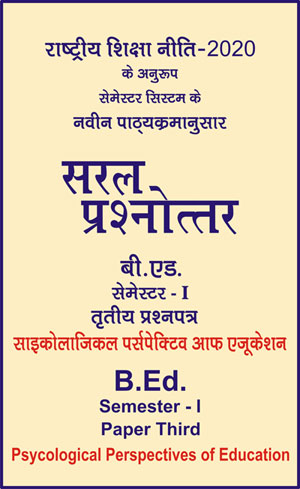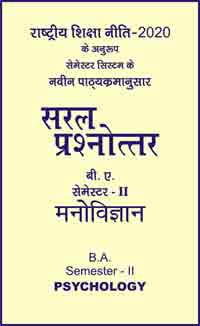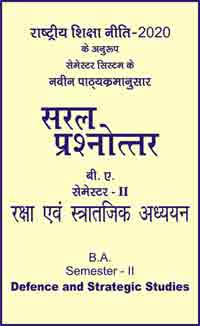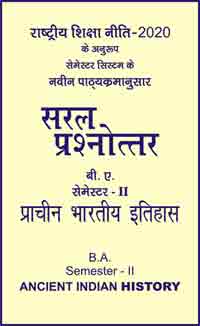|
बी एड - एम एड >> बी.एड. सेमेस्टर-1 प्रश्नपत्र-III - साइकोलाजिकल पर्सपेक्टिव आफ एजूकेशन बी.एड. सेमेस्टर-1 प्रश्नपत्र-III - साइकोलाजिकल पर्सपेक्टिव आफ एजूकेशनसरल प्रश्नोत्तर समूह
|
5 पाठक हैं |
|||||||
बी.एड. सेमेस्टर-1 प्रश्नपत्र-III - साइकोलाजिकल पर्सपेक्टिव आफ एजूकेशन (अंग्रेजी भाषा में)
Question- Describe the Gagne’s hierarchy of learning.
Or
Write a note on chain learning according to Gagne’s hierarchy of learning.
Answer-
American psychologist Robert M. Gagne had represented a system of different types of learning. He took eight basic types and arranged them in a order. These eight steeps are as under -
Gagnes Hierarchy of learning
-
Signal Learning - The simplest form of learning known as classical conditioning. The learner is conditioned to produce a desired (involuntary) response as a result of a stimulus that would not normally produce that response i.e a salivation (condition) at the sound of a bell (stimulus).
-
Stimulus-Response Learning - This is a voluntary response to learning that may be used in acquiring verbal skills as well as physical movements. This type of learning can occur when the instructor praises the learner for deeper thinking or provides constructive criticism during reflection or debriefing.
-
Chain Learning or Chaining - It occurs when the learner is able to connect two or more previously learned stimulus-response bond into a linked order; more complexed psychomotor skills are learned, but they tend to occur naturally. learning how to tie shoestrings or buttoning a shirt.
-
Verbal Association - It occurs when the learner makes associations using verbal connections; it is the key process in language skill development. For example a student nurse being able to define medical terminology and apply it to clinical situation.
-
Discrimination Learning - This learning is seen when the learner is able to perform different responses to a series of similar stimuli that may differ in a systematic way. Discrimination learning is made more difficult when the learner comes across road blocks or interference that inhibits continual learning. For example a patient complaining of abdominal pain after abdominal surgery. The student must learn how to differentiate this pain from that of gas, intraabdominal bleeding, incisional pain or infection. Interference may present itself when the student can not see other key factors that may contribute to the pain; therefore not allowing the student to fully address or manage the patient’s pain appropriately.
-
Concept Learning - Concept learning involves the ability to make consistent responses to different stimuli. It is the process in which the learner learns how to organize learning in a systematic structure and foster deeper learning. The student’s behaviour is controlled by the abstract properties of each stimulus. The student nurse must realize interventions, or behaviours, appropriate for one patient, or stimulus, may not be appropriate for the next patient.
-
Rule Learning - This involves being able to learn relationships between two or more concepts and apply them in different situations, new or old; it is the basis of learning general rules or procedures. This can be seen when the student can apply advocacy and confidentiality to a patient situation.
-
Problem solving - It involves developing the ability to invent a complex rule or procedure for the purpose of solving one particular problem and other problems of a similar nature. This can be accomplished through case studies and reflection. Nursing students can improve on problem solving through the nursing process: assessing, formulating a nursing diagnosis, analyzing data specific to the problem and evaluating the effectiveness of the plan.
|
|||||














